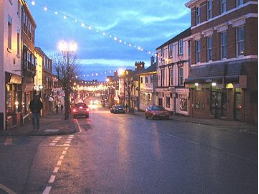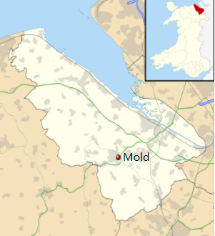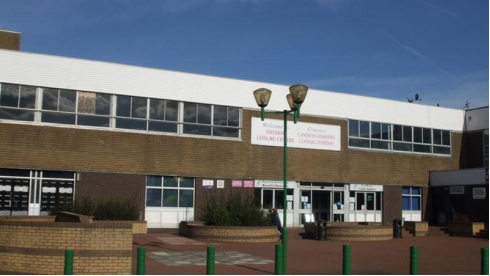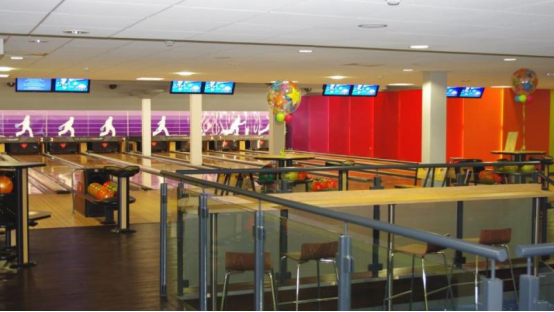Mold, Flintshire, Wales, UK 作者: 来源: 发布时间:2021-09-17
I. Population and Area
Continent: Europe
Country: The U.K
State/Province: Wales
City/Town: Mold, Flintshire
Total Area: 169 (sq mi) (Flintshire)
Population in 2011: 10.06 (thousand)

II. Natural Geography (environment and resources)
Transport
Mold railway station closed to passengers in 1962. The nearest station is now Buckley, which has services to Wrexham and Liverpool. Flint railway station, to which Mold has regular bus services, is not much further and has direct trains to Cardiff, London and Manchester. There are frequent daytime services from Mold Bus Station to Chester, Wrexham, Denbigh, Holywell, Ruthin and other places. Located on the North Wales Coast Line (Holyhead to Chester) with services run by Avanti West Coast and Transport for Wales specifically calling at Flintshire stations such as Flint and Shotton with an interchange at Shotton with the Borderlands Line, which links other Flintshire stations with the Liverpool area.

Climate
Mold has a typical British maritime climate with cool summers and mild winters. The nearest official Met Office weather station for which online records are available is at Loggerheads, about three miles west of the town centre. The highest temperature recorded in the area was 31.7 °C (89.1 °F) in August 1990. However, the warmest day is typically around 26.4 °C (79.5 °F), one of around four days to reach a temperature of 25.1 °C (77.2 °F) or above.
Geography
Flintshire is a maritime county bounded to the north by the Dee estuary, to the east by Cheshire, to the west by Denbighshire and to the south by Wrexham County Borough. The coast along the Dee estuary is heavily developed by industry and the north coast much developed for tourism. The Clwydian Range occupies much of the west of the county. The highest point is Moel Famau (1,820 feet/554 metres). The chief towns are Buckley, Connah's Quay, Flint, Hawarden, Holywell, Mold, Queensferry, and Shotton. The main rivers are the Dee (the estuary of which forms much of the coast), and the River Alyn.
III. Economy
Average Salary in Mold, Wales: Flintshire £22k
The Welsh average is £23,866 while the UK figure is £31,976. In comparison Gwynedd was above the average Welsh figure at £24,169 . The GDP for Wrexham and Flintshire (whose figure is measured together) stood at £25,584. Conwy and Denbighshire (which is also calculated jointly) had a lower figure of £20,380.


About Mold, Wales: Flintshire
The average salary in Mold, Wales: Flintshire is £22k. Trends in wages decreased by -100.0 percent in Q3 2020. The cost of living in Mold, Wales: Flintshire is 100 percent higher than the national average. The most popular occupations in Mold, Wales: Flintshire are Teaching Assistant (TA), Automotive Service Technician / Mechanic, and Practice Manager which pay between £12k and £48k per year.
Reference Website:
https://www.payscale.com/research/UK/Location=Mold-Wales%3A-Flintshire/Salary
https://www.dailypost.co.uk/news/north-wales-news/anglesey-remains-near-bottom-uks-17493727
IV. Industrial Characterisitics
Major industries:
Coal industry
In the 1530s, the Tudor antiquarian John Leland noted the weekly market had been abandoned. By now Mold had two main streets, Streate Byle (Beili) and Streate Dadlede (Dadleu-dy), and about 40 houses making up the settlement. By the beginning of the 17th century, the population was beginning to rise due to the development of the coal industry near the town. By the 1630s there were more than 120 houses and huts in the area.
Steel industry
The government of Elizabeth I had established royal representatives (Justices of the Peace, Sheriffs, and Lords Lieutenant) in every county of Wales. Mold developed into the administrative centre for Flintshire. By the 1760s, the Quarter Sessions were based in the town; the county hall was established in 1833, and the county gaol in 1871. Parts of Flintshire have major manufacturing industries. Amongst these are an advanced Toyota plant that manufactures engines, UPM Shotton Paper, and Airbus_UK, making the wings for the A330 and the A380 at Broughton.
There are daily flights of the Airbus Beluga transport aircraft of Airbus wings from Broughton for the smaller aircraft. The wings for the A380, which are too large to be transported by air, use a multi-modal transport using Flintshire's roads, the River Dee and the port of Mostyn, also in Flintshire.
Flintshire is also known for its internet companies, the largest and most well known being Moneysupermarket.com based in Ewloe. Flintshire included much of the North Wales Coalfield, with the last colliery at Point of Ayr closing in 1996. Flintshire is home to Shotwick Solar Park, currently the largest photovoltaic solar array in the UK. It was built in 2016 and covers 250 acres of the south western edge of the Wirral Peninsula near the village of Shotwick. It has a maximum generating capacity of 72.2 MW and is connected directly to the largest paper-mill in the UK, UPM Shotton Paper.
Flintshire was home to a thriving steel industry with many of the local communities and homes being built around this sector. This came to an end in 2018 when the counties largest former British Steel plant which had been sold to TATA Steel closed down with a loss of 6,500 jobs in North Wales.
Major projects and related introductions:
An historic site could be "elevated in importance" due to new archaeological finds, experts have said. Bailey Hill, in Mold, Flintshire, is the site of a castle which was thought to have been built using timber in the 11th Century. But a masonry wall has been found, along with arrowheads and human remains during redevelopment work. A £1.8m project aims to encourage further use of the site for leisure and events. Building work started in February and is due to be completed in January, despite delays because of the coronavirus pandemic.
Reference Website:
https://www.bbc.com/news/uk-wales-55452189
V. Attractions
1. Greenacres Animal Park:

Visit all kinds of animals at Greenacres Animal Park including domesticated, zoological and all your favourite furry farmyard friends!
In the pets corner you can meet rabbits, guinea pigs, ducklings, chicks, piglets, owls, reptiles and even skunks! Just don’t make any sudden movements! There is a fantastic Victorian fairground to enjoy with whirling and spinning cars and aeroplanes and a mini Ferris wheel.
On-board the tractor engine tour see and learn all about the animals down in the fields such as the cattle, pigs, horses, llamas and alpacas, sheep and Shetland ponies. The soft play barn offers two levels of fun ready for children to enjoy, while parents can finally sit back and relax with a coffee and a piece of cake! First-class educational farmyard family fun!
2. Deeside Leisure Centre:

You can take the family Ice Skating at Deeside Leisure Centre on a terrific synthetic rink and show the kids how to glide… it's a great way to get exercise and a good laugh at the same time! Or you can take them Ten Pin Bowling - where even young kids can get ahead, especially as they're usually using those cheeky ramps and gutter guards!
If the kids are getting a bit older and want to explore a bit more they can hit the Evolution Extreme Skatepark (with it's beginner section, intermediate areas and stunt spots) and parties can also access the High Ropes Skytrail! The high ropes are essentially an assault course above the ground. Quite a lot above the ground...
Bouldering is great for most ages as it's low level climbing with a varity of challenging grips to select from as you move along, with 'easy please' being a popular option so don't fret! They don't have to wear harnesses and such because of the professional grade crash mats waiting to cushion any (short) falls, so the kids are unencumbered and free to move around like the little monkeys they are!
There are also lots of sports facilities, amongst which badminton, futsal and table tennis may appeal to children most. All in all a great place for an active day out, whatever you choose to do!
3. Flint Bowl:

Flint Bowl: first and foremost they're an 8 lane bowling alley with a friendly vibe great for kids and family tournaments. But there's more…
There is also an indoor adventure soft play facility here which operates through and around their pirate galleon! Loads of little chambers of fun spread over several levels, with slides, tunnels, bridges, balls and all the other classic bits and bobs they love!
Elsewhere on the same site there is also a 25m swimming pool with separate learner pool! Great for keeping the kids cool in the summer and brilliant exercise too. If you're thinking of taking a bunch of kids and everyone doing separate activities then do please check the supervision ratios: if the kids don't have enough grown ups with them they can't swim! Plus to cap it all off there's air hockey, free parking and a cafe. What more do you want!?
Reference Website:
https://www.dayoutwiththekids.co.uk/things-to-do/north-wales/flintshire-and-wrexham/mold
VI. History
A mile west of the town is Maes Garmon, ("The Field of Germanus"), the traditional site of the "Alleluia Victory" by a force of Romano-Britons led by Germanus of Auxerre against the invading Picts and Scots, which occurred shortly after Easter, AD 430.
Mold developed around Mold Castle. The motte and bailey were built by the Norman Robert de Montalt in around 1140 in conjunction with the military invasion of Wales by Anglo-Norman forces. The castle was besieged numerous times by the Princes of Gwynedd as they fought to retake control of the eastern cantrefi in the Perfeddwlad (English: Middle Country). In 1146, Owain Gwynedd captured the castle. By 1167, Henry II was in possession of the castle, although it was recaptured by the Welsh forces of Llywelyn the Great in 1201.
Anglo-Norman authority over the area began again in 1241 when Dafydd ap Llywelyn yielded possession of the castle to the de Montalt family. However, he recaptured it from the Plantagenet nobility in 1245. The next few decades were a period of peace; Llywelyn ap Gruffudd built the Welsh native castle of Ewloe further to the east establishing the House of Gwynedd's military control over the area. Under Welsh rule, Mold Castle was deemed to be a "royal stronghold". It was recaptured by the forces of Edward I during the first months of the war of 1276–77. Mold Castle was still a substantial fortification at the outbreak of the rebellion by Madog ap Llywelyn in 1294. However, with the death of the last Lord Montalt in 1329, the castle's importance began to decline. The last mention of the fortification is in Patent Rolls from the early 15th century.
With the end of the Welsh Wars, English common law was introduced by the Statute of Rhuddlan. This led to an increase in commercial enterprise in the township which had been laid out around Mold Castle. Trade soon began between the Welsh community and English merchants in Chester and Whitchurch, Shropshire. During the medieval period, the town held two annual fairs and a weekly market, which brought in substantial revenues, as drovers brought their livestock to the English-Welsh border to be sold.
In the 1530s, the Tudor antiquarian John Leland noted the weekly market had been abandoned. By now Mold had two main streets, Streate Byle (Beili) and Streate Dadlede (Dadleu-dy), and about 40 houses making up the settlement. By the beginning of the 17th century, the population was beginning to rise due to the development of the coal industry near the town. By the 1630s there were more than 120 houses and huts in the area.
The government of Elizabeth I had established royal representatives (Justices of the Peace, Sheriffs, and Lords Lieutenant) in every county of Wales. Mold developed into the administrative centre for Flintshire. By the 1760s, the Quarter Sessions were based in the town; the county hall was established in 1833, and the county gaol in 1871.
In 1833, workmen digging a Bronze Age mound at Bryn yr Ellyllon (Fairies' or Goblins' Hill) found a unique golden cape dating from 1900–1600 BC. It weighs 560 grams (20 oz) and was made from a single gold ingot about the size of a golf ball. It was broken when found and the fragments shared among the workmen, with the largest piece for Mr Langford, tenant of the field in which the mound stood. The find was recorded by the Vicar of Mold and came to the notice of the British Museum. In 1836 Langford sold his piece to the Museum, which has since acquired most of the pieces, though it is said that some wives of the workmen sported new jewellery after the find. The restored cape now belongs to the British Museum.
Mold hosted the National Eisteddfod in 1923, 1991 and 2007. There was an unofficial National Eisteddfod event in 1873.
Mold was linked to Chester by the Mold Railway, with a large British Rail station together with adjacent marshalling yards and engine sheds; however, these closed when Croes Newydd at Wrexham was opened. The station was closed in 1962 in the Beeching cuts, though the track survived until the mid-1980s to serve the Synthite chemical works. A Tesco supermarket was built on the station site in the 1990s.
In summer 1869 there was a riot in the town which had considerable effect on the subsequent policing of public disturbances in Britain.
On 17 May 1869, John Young, the English manager of the nearby colliery in Leeswood, angered his workers by announcing a pay cut. He had previously strained relationships with them by banning the use of the Welsh language underground. Two days later, after a meeting at the pithead, miners attacked Young before frogmarching him to the police station. Seven men were arrested and ordered to stand trial on 2 June. All were found guilty; and the convicted ringleaders, Ismael Jones and John Jones, were sentenced to a month's hard labour.
The Coroner's inquest on the first three deaths was held in the same week as the riot, on Saturday 5 June. The Coroner, Peter Parry, was described as "exceedingly old and infirm and being so deaf as to be compelled to use a 'speaking' trumpet, to which affliction must be added that greater one of partial blindness." He was assisted by the Deputy Coroner, his brother Robert Parry, surgeon, of Mold. The Jury's verdict, following clear direction from the Coroner and after retiring for only five minutes to consider the matter, was that of justifiable homicide. Later that afternoon the Coroner held a further inquest on the death of Elizabeth Jones, who had died at 11 pm the previous night. The same verdict was reached. The following week Isaac Jones, a collier at Black Diamond, was one of several men tried for involvement in the riot. He was allowed bail to attend the funeral of his wife. The other men tried were William Griffiths (medical herbalist, former collier, Mold), Rowland Jones (age 25, collier, Pontyblyddan), Gomer Jones (age 17, collier) and William Hughes (collier) The trial found them guilty of "felonious wounding" and Lord Chief Justice Bovill sentenced them all to ten years' penal servitude.
Although he strenuously denied the connection, Daniel Owen, who lived in the town, featured some very similar events in his first novel, Rhys Lewis, published in instalments in 1882–1884.
VII. Culture
School
Mold has two secondary schools that serve the town and the surrounding villages. The Alun School with about 1,800 pupils is the largest school in the county. It is adjoined by Flintshire's only Welsh-medium secondary school: Ysgol Maes Garmon. The town also has the largest primary school in the county, Ysgol Bryn Coch, with about 650 pupils.
Mold test accuracy & error sources with culture plates:
This article describes the reliability and accuracy of home test kits for mold that rely on mold culture media. We explain the causes and the significance of errors when using mold cultures or "home test kits" to screen a building for indoor mold contamination. In sum, mold culture kits are unreliable as a means to screen a building for the presence of dangerous levels of mold contamination. Here we explain why that is so. We also provide a MASTER INDEX to this topic, or you can try the page top or bottom SEARCH BOX as a quick way to find information you need.
Reference Website:
https://inspectapedia.com/mold/Mold_Culture_Test_Errors.php
VIII. Other information
Sharing a building with Mold Library and Museum is Visit Flintshire, the main Tourist Information Office for the town and its surroundings, which provides a sales outlet for local artists and crafts people.
Mold is a cittaslow – the first town in Wales to achieve the distinction. It has a varied street market on Wednesday and Saturday for fresh produce and other goods. For speciality and fresh local food, Celyn Farmers' Market is held on the first and third Saturdays of each month in Mold. Several producers who feature in the Mold markets also appear regularly at the Borough Market in London.
The Mold Food and Drink Festival is held each September, with a main event area on the edge of the town centre and many central and nearby businesses contributing. The year 2012 saw Mold's first annual "November Fest", a beer festival held in St Mary's Church Hall, King Street and venues in and around Mold, to promote real ale, cider and wine.
IX. Contact information
Mayor/Officer: Teresa Carberry
Tel: 01352 758532
Mail: events@moldtowncouncil.org.uk
Reference Website:
http://www.moldtowncouncil.org.uk/Mold-TC/the_town_mayor-11785.aspx
